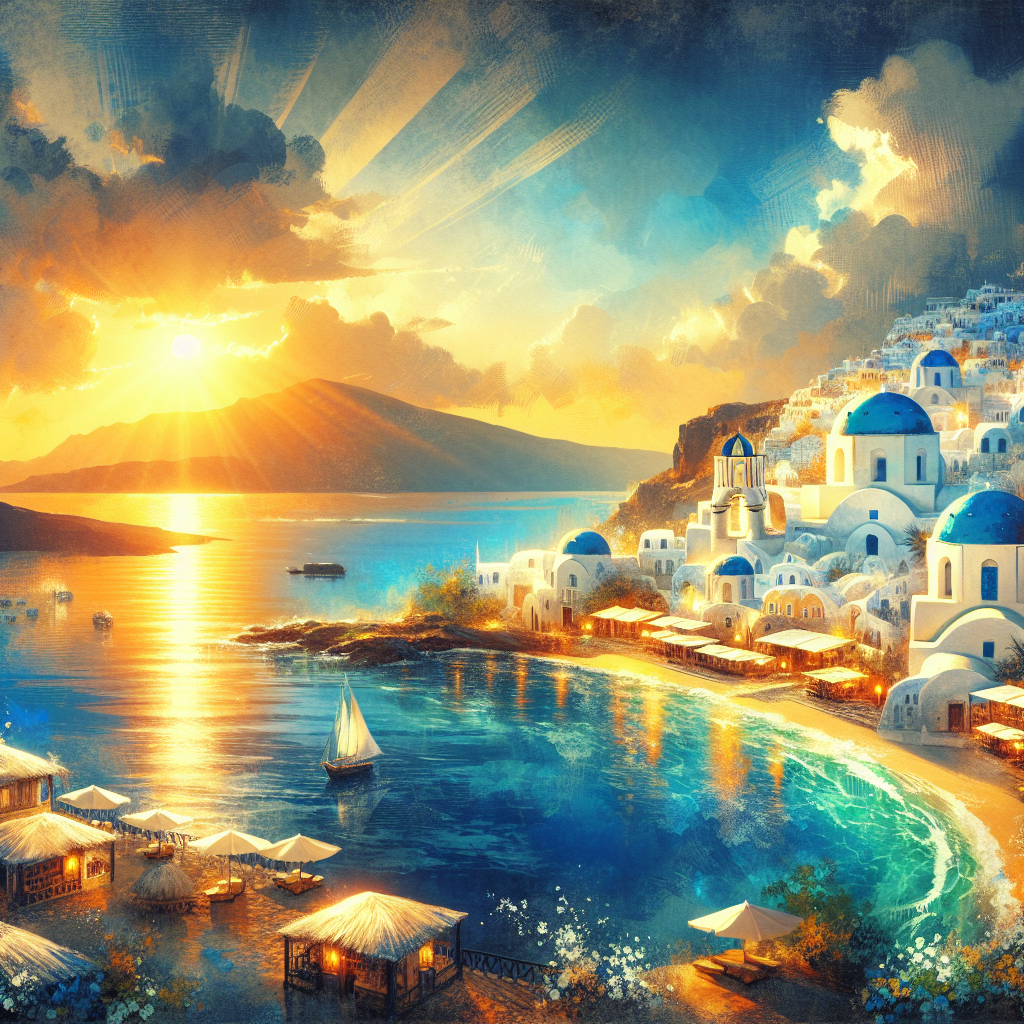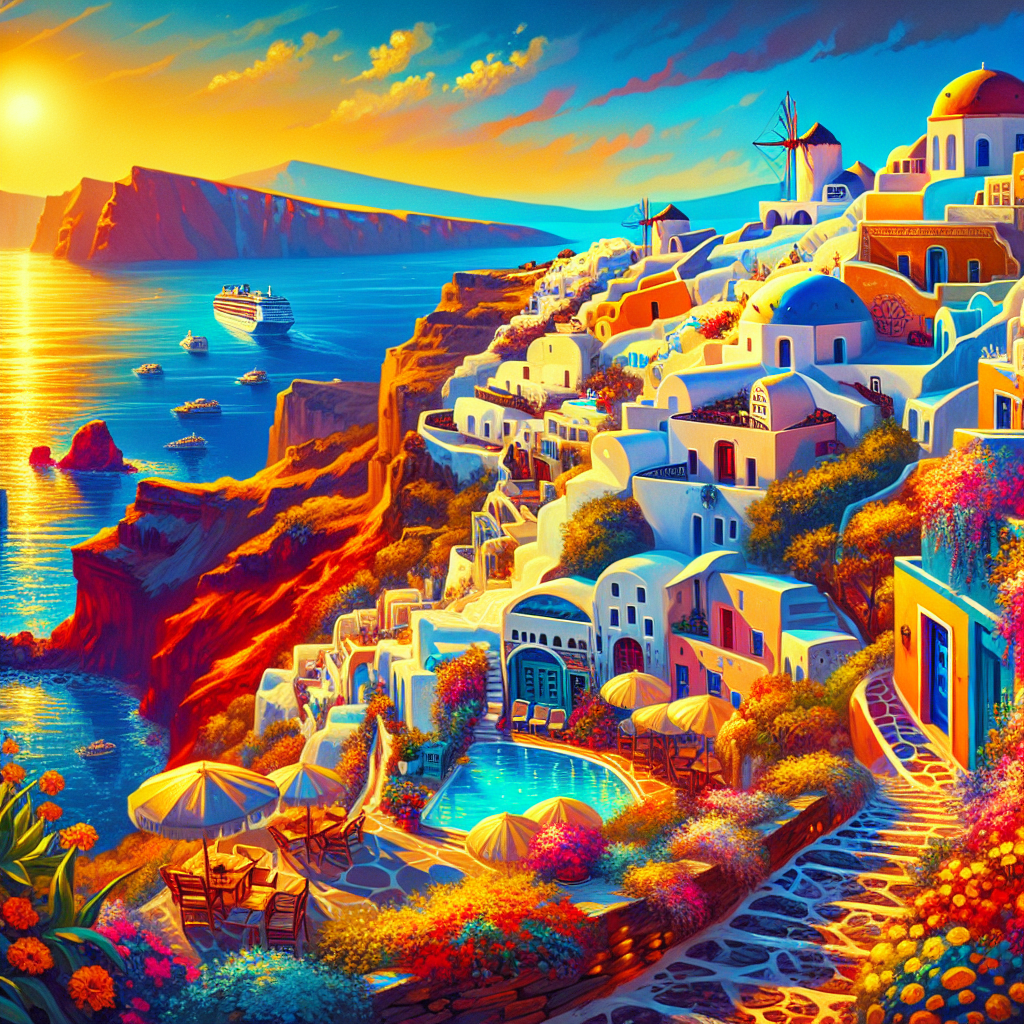Immerse yourself in the vibrant world of Greek islands as they come alive in literature and film. From the enchanting landscapes of Santorini to the bustling streets of Mykonos, these idyllic destinations have captivated the imaginations of writers and filmmakers alike. Delve into the pages of beloved novels or lose yourself in cinematic masterpieces, as you embark on a journey that unveils the allure and mystique of the Greek islands. Experience the charm, beauty, and cultural richness that have made these islands a beloved setting for countless literary and cinematic tales. So grab a book or a bucket of popcorn and prepare to be transported to the enchanting world of the Greek islands.

Greek Islands in Literature
1. Ancient Greek Literature
From the epic poems of Homer to the philosophical writings of Plato, ancient Greek literature is filled with references to the enchanting Greek islands. These literary works transport us to a time when the islands were not just physical locations, but places of myth and legend. In Homer’s “Odyssey,” the hero Odysseus embarks on a long and treacherous journey, encountering mythical creatures and facing numerous challenges on his way back to his beloved island of Ithaca. The islands in ancient literature are often depicted as idyllic, paradisiacal places, where gods and goddesses would descend from Mount Olympus to mingle with mortals.
2. Modern Greek Literature
Modern Greek literature also draws inspiration from the captivating allure of the Greek islands. Authors like Nikos Kazantzakis, known for his timeless work “Zorba the Greek,” and George Seferis, a Nobel laureate in literature, have included vivid descriptions of the islands in their writings. These literary works not only showcase the natural beauty of the islands but also delve into the complex emotions and struggles of their inhabitants. They portray the islands as a microcosm of Greek society, where timeless traditions collide with modernity and where the islanders’ connection to the sea and their surroundings is deeply ingrained in their identity.
3. Greek Mythology and Folklore
Greek mythology and folklore have played a significant role in shaping the literary depiction of the Greek islands. These mythical tales often involve the islands as the backdrop for epic battles, divine interventions, and tragic love stories. Take, for example, the story of the beautiful nymph Calypso, who imprisoned the hero Odysseus on the island of Ogygia in Homer’s “Odyssey.” The island of Delos is said to be the birthplace of the twin gods Apollo and Artemis. Greek mythology and folklore have not only infused the literary representation of the islands but have also inspired modern interpretations in film and television.
Greek Islands in Film
1. Classical Greek Films
Greek cinema has a long and rich history, and many classic Greek films have showcased the beauty of the islands. Films like “Never on Sunday” (1960) and “Zorba the Greek” (1964) have brought international recognition to Greek cinema and showcased stunning island landscapes. These films not only capture the physical beauty of the Greek islands but also explore the unique cultural and social dynamics of the island communities. They give viewers a glimpse into the traditional way of life, the vibrant music and dance, and the warm hospitality that is characteristic of islanders.
2. International Films Filmed in the Greek Islands
The mesmerizing beauty of the Greek islands has attracted filmmakers from around the world. International films like “The Big Blue” (1988), directed by Luc Besson, and “Mamma Mia!” (2008), starring Meryl Streep, have utilized the picturesque landscapes and charming architecture of the islands as a backdrop for their stories. These films often depict the islands as idyllic and romantic destinations, adding to the allure and mystique associated with the Greek islands.
3. Blockbuster Films Featuring Greek Islands
Blockbuster films have also taken advantage of the enchanting Greek islands for their settings. One notable example is “Captain Corelli’s Mandolin” (2001), which tells a love story against the backdrop of the beautiful island of Kefalonia. This film not only showcases the stunning landscapes but also delves into the island’s complex history during World War II. Other notable films featuring the Greek islands include “Before Midnight” (2013), the third installment of the “Before” trilogy, and “The Sisterhood of the Traveling Pants” (2005), which takes viewers on a journey through the Greek islands of Santorini, Mykonos, and Crete.
The Influence of Greek Islands in Literature and Film
1. Capturing the Beauty and Essence
Literature and film have the power to transport us to distant places and immerse us in their beauty and essence. The Greek islands, with their sparkling blue waters, whitewashed buildings, and breathtaking sunsets, have captivated the imaginations of writers and filmmakers alike. The descriptions and visual representations of the islands in literature and film allow us to experience their allure and splendor, even from the comfort of our own homes.
2. Symbolism and Themes
The Greek islands often serve as more than just a backdrop in literature and film. They are symbols of escape, freedom, and self-discovery. Many characters in both ancient and modern works leave the mainland and travel to the islands in search of solace or transformation. The isolation of the islands, surrounded by the vastness of the sea, often mirrors the internal struggles and conflicts faced by the characters. The landscapes and seascapes become a reflection of their emotional state, symbolizing their journey towards self-realization.
3. Cultural and Historical References
The Greek islands have a rich cultural and historical heritage that has influenced their portrayal in literature and film. From ancient civilizations to Byzantine empires, from Venetian rule to Ottoman occupation, the islands have witnessed centuries of history. This historical context often weaves its way into the narrative, adding depth and authenticity to the storytelling. Whether it is through references to ancient mythology or allusions to the struggles of the past, literature and film offer glimpses into the intricate tapestry of the Greek islands’ cultural and historical significance.
Popular Greek Islands Depicted in Literature and Film
1. Santorini
Santorini, with its iconic blue-domed churches and dramatic cliffside views, has become synonymous with the Greek islands’ romantic allure. In literature, it has been featured in countless novels, including “The Island” by Victoria Hislop, which tells the story of a family’s history on the island. In film, Santorini takes center stage in “The Sisterhood of the Traveling Pants,” where the characters find love and adventure against the backdrop of this stunning island.
2. Mykonos
Mykonos, known for its vibrant nightlife and cosmopolitan atmosphere, has also found its way into literature and film. In the novel “Mykonos After Midnight” by Jeffrey Siger, the island becomes the setting for a thrilling murder mystery. In film, Mykonos is prominently featured in “Mamma Mia!” as the picturesque backdrop for a mother-daughter reunion and a celebration of love.
3. Crete
Crete, Greece’s largest island, boasts a rich history and diverse landscape, making it a popular setting for literature and film. In Kazantzakis’ “Zorba the Greek,” the protagonist encounters the larger-than-life character Zorba on this island, leading to a transformative journey. In the film “Captain Corelli’s Mandolin,” the breathtaking beaches and rugged coastline of this island provide the backdrop for a passionate love story set during World War II.
4. Rhodes
Rhodes, with its medieval old town and ancient ruins, has a unique charm that has fascinated writers and filmmakers alike. In literature, Rhodes is featured in “The Island of the Colorblind” by Oliver Sacks, where the author explores the island’s extraordinary history and its people. In film, Rhodes serves as a backdrop for the epic historical adventure “Agora” (2009), which tells the story of Hypatia, a renowned philosopher and mathematician.
5. Corfu
Corfu, with its lush green landscapes and Venetian-inspired architecture, has inspired numerous literary works. Perhaps the most famous is Gerald Durrell’s “My Family and Other Animals,” a humorous and heartfelt memoir of his childhood spent on the island. In film, Corfu is featured in the British TV series “The Durrells,” which brings Durrell’s memoirs to life and showcases the island’s natural beauty.
6. Zakynthos
Zakynthos, known for its stunning beaches and crystal-clear waters, has made appearances in both literature and film. In “The Lady of Zakynthos” by Juanita Coulson, the island becomes the setting for a captivating love story set in the turbulent times of the Greek War of Independence. In film, Zakynthos is featured in the romantic drama “The Big Blue,” capturing the island’s idyllic charm.
7. Paros
Paros, famous for its traditional villages and golden sand beaches, has attracted writers and filmmakers seeking to capture its unique character. In literature, Paros is featured in “The Stones of Paros” by Stephen Thursby, a historical novel that explores the island’s intriguing past. In film, Paros is glimpsed in the French drama “Summer Hours” (2008), a poignant story that reflects on family, legacy, and the passage of time.
8. Hydra
Hydra, a picturesque island with its charming harbor and stone mansions, has become a favorite destination for artists and writers. In literature, Hydra is prominently featured in “The Colossus of Maroussi” by Henry Miller, a vivid account of the author’s travels through Greece. In film, Hydra is showcased in the visionary work of French director Leos Carax, who captured the island’s natural beauty in his film “Boy Meets Girl” (1984).
9. Naxos
Naxos, the largest of the Cyclades islands, possesses a rich mythological and historical heritage that has been reflected in literature and film. In literature, Naxos features in Mary Renault’s historical novel “The King Must Die,” which brings the ancient myth of Theseus to life on this island. In film, Naxos serves as a backdrop for the romantic drama “Before Midnight,” further elevating the island’s allure.
10. Lesbos
Lesbos, known for its picturesque coastline and vibrant culture, has made its way into literature and film. In literature, the island is prominently featured in the poetry of Sappho, the renowned lyric poet from ancient Greece. In film, Lesbos is woven into the tapestry of the award-winning film “Head-On” (2004), which explores themes of identity, love, and acceptance.
The enchanting Greek islands have left an indelible mark on both literature and film. From ancient epics to modern novels, from classic Greek cinema to international blockbusters, the islands’ beauty, symbolism, and cultural significance have been eloquently captured. Whether it is the mythical tales of ancient Greece or the contemporary narratives of island life, the Greek islands continue to inspire storytellers and transport readers and viewers to a realm of beauty, history, and romance.

